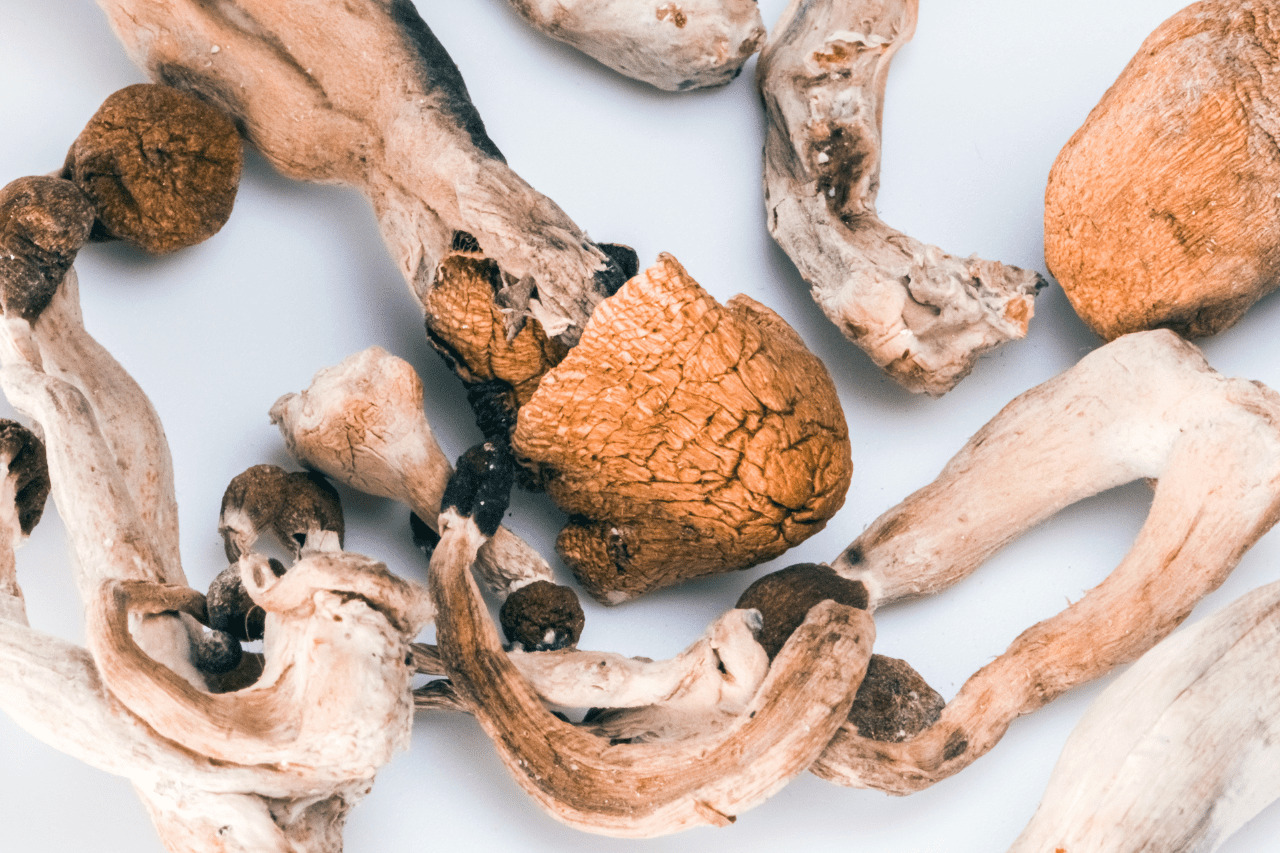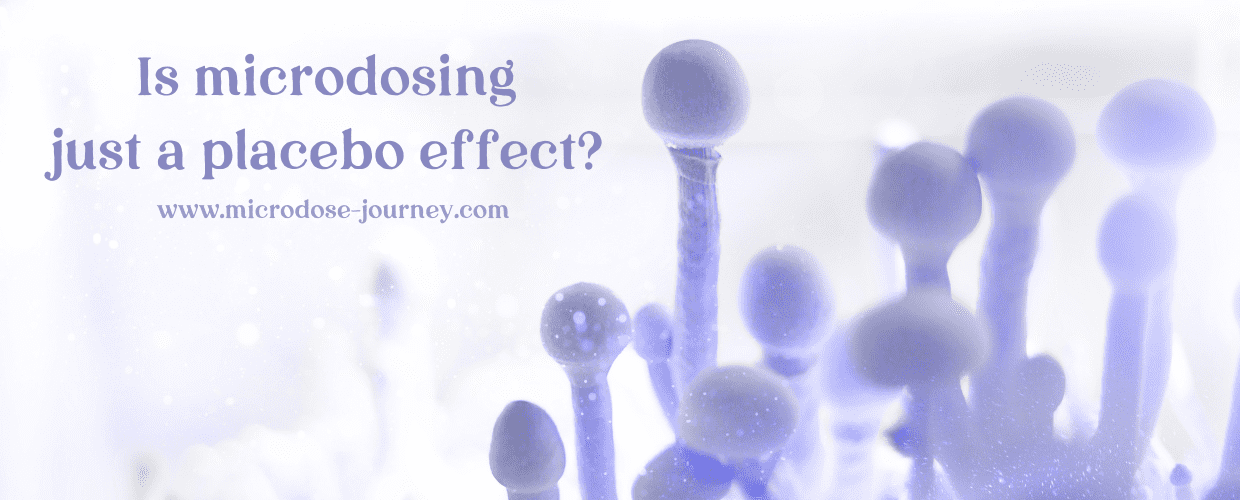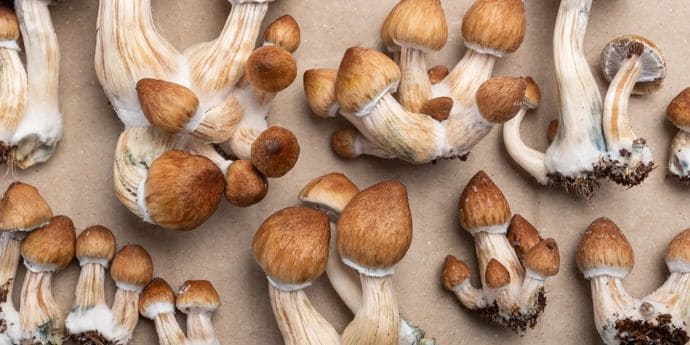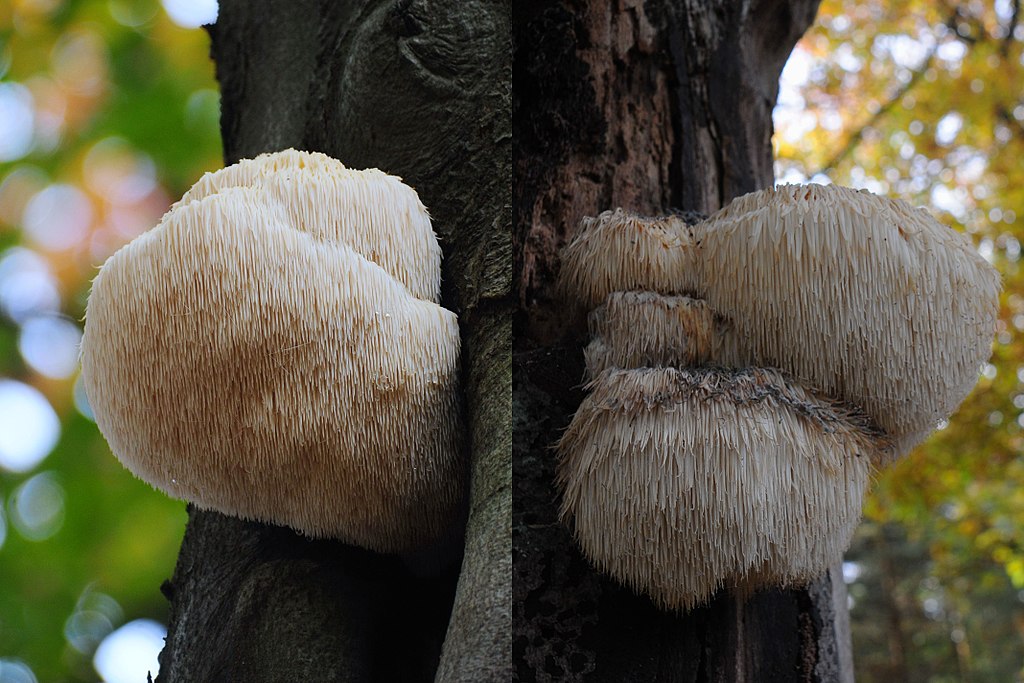
First time microdosing? Here is what you need to know
Welcome, curious minds! If you’re here, then you must have heard about microdosing, the practice of taking very small amounts of psychedelic substances to

Is microdosing real, or is it all a placebo effect?
Microdosing is when you take a sub-pharmacological dose of a substance. Often a psychedelic like psilocybin mushrooms or Lysergamides.
Advocates for microdosing say it helps boost productivity, aids creativity, and gives you that extra focus you might need for school.
Microdosing has all kinds of advantages. But how much of it is real versus perceived? Are people who are microdosing experiencing the placebo effect?
Let’s get to the bottom of this!
Microdosing is the practice of taking small, sub-therapeutic doses of a psychedelic drug, such as LSD or psilocybin, to improve mood, creativity, and cognitive function.
The idea behind microdosing is that taking a tiny amount of a psychedelic drug can produce subtle changes in a person’s mental state. These changes can be beneficial without causing the intense, sometimes unsettling effects that can occur at higher doses.
Microdosing is still a relatively new practice, and we always welcome more research. But so far, our studies indicate that microdosing isn’t entirely a placebo.
A placebo is a substance that looks like a medication but contains no active ingredients. It is typically used in medical research as a control substance to help researchers understand the effects of a real medication.
In a clinical trial, for example, one group of participants might be given the medication. While another group, known as the control group, would be given a placebo.
The participants in the study would not know which group they were in, and the researchers would compare the effects of the medication and the placebo on the participants to determine if the drug was effective.
Placebos are commonly used in medical research because they can help control for the psychological effects of taking a medication, such as the expectation of improvement or the desire to please the researchers.
Researchers believe placebos work through the power of suggestion and the psychological effects of taking a medication. When a person takes a placebo, they may expect to feel better or to experience some other benefit, and this expectation can sometimes produce fundamental physical or psychological changes.
For example, if a person believes that a placebo pill will help them relax, they may feel more relaxed after taking it. This phenomenon is known as the placebo effect.
While placebos do not contain any active ingredients, the psychological effects of taking one can sometimes produce measurable changes in a person’s symptoms or behaviour. This is why scientists use placebos in their research. They can control for the psychological effects of taking medication. And they help determine whether a real medication is effective.
With that said, are the results of microdosing merely a placebo or an actual phenomenon?
Click here to shop our microdosing products!
If you want to know if microdosing produces tangible benefits vs a placebo effect, you’ll have to look at placebo-controlled studies.
In placebo-controlled studies, researchers give one group of participants a small dose of the psychedelic. While another group, known as the control group, is given a placebo.
The participants in the study would not know which group they were in. And the researchers would compare the drug’s and the placebo’s effects on the participants to see if the drug has any measurable benefits.
Microdosing studies are still relatively new, and more research is needed to fully understand the benefits and potential risks of this practice. But fortunately, we have some solid microdosing studies we can reference.
One study published in Addiction Biology found that microdosing with low doses of LSD for two weeks produced results that weren’t in the placebo-controlled group.
Participants reported feeling less fearful, isolated, and prone to flight-or-fight responses. They also felt more enthusiastic and energetic.
That said, the lead researcher said the effect wasn’t “robust” but admitted the size and scope of the study were limited.
Another placebo-controlled study looking at microdosing came to less-than-optimal conclusions. The researchers of this study concluded that “expectation underlies at least some of the anecdotal benefits attributed to microdosing.”
But notice the phrase, at least some. Meaning they couldn’t attribute everything to the placebo effect.
The researchers measured brain changes in the microdosing participants. They had altered EEG rhythms. EEG rhythms are patterns of brain activity that researchers record using an electroencephalography (EEG) machine.
EEG measures the brain’s electrical activity by recording the voltage changes that occur in the brain’s cells as they communicate. When these voltage changes are plotted over time, they form an EEG trace, which researchers can analyze to identify specific patterns or rhythms.
EEG rhythms can provide insight into the brain’s function. And researchers can use it to diagnose and monitor various brain disorders. They are also of interest to researchers studying brain function and the effects of multiple interventions on brain activity.
The researchers of our microdosing study couldn’t pinpoint how these EEG rhythm changes correlated to certain behaviours. But it’s clear microdosing is doing something beyond a mere placebo effect.
In partnership with the Maastricht Programme, the UK-based Beckley Foundation conducted a study on microdosing in a laboratory.
The first of its kind, researchers had participants microdose LSD or a placebo. Researchers took blood samples every hour and detected changes using an ELISA test. (ELISA stands for enzyme-linked immunosorbent assay, a type of diagnostic test that researchers use to detect the presence of a specific substance).
The result? Researchers found changes in the brain-derived neurotrophic factor (BDNF).
BDNF plays a crucial role in developing and maintaining the nervous system. We know it has several other essential functions in the body.
For example, researchers believe it regulates mood, learning, and memory. It may also have a role in developing some mental disorders, such as depression and anxiety.
Researchers did not find these changes in the BDNF in the placebo-control group.
While we always welcome more collaborating research, this Beckley study is fundamental in understanding how microdosing goes beyond mere placebo. (This study also found pain-killing properties, further proving that microdosing is not a placebo.)

Are you looking for a way to boost your focus and memory? Microdosing may be the answer you’re looking for!
It’s clear that microdosing produces brain changes, but do these changes translate into greater focus or lesser anxiety? By influencing the part of the brain that regulates our mood, learning, and memory, microdosing can play a positive role.
Overall, microdosing protocols set the foundation for positive brain changes. And once we think and feel these brain changes, we can change our behaviour to be more productive or less anxious.
In other words, research indicates that when it comes to microdosing vs placebo, microdosing wins.

Welcome, curious minds! If you’re here, then you must have heard about microdosing, the practice of taking very small amounts of psychedelic substances to

Lion’s Mane is a culinary and medicinal mushroom, and like many other edible fungi, they have essential nutrients and important health benefits. However, this particular

How journaling could change your life: a new approach to your practice There are so many different methods of journaling. Dream journaling, bullet journaling, gratitude

Let’s face it: New Year resolutions are super tough! As the New Year rolled in, hearts around the world sang with hope, filled with

There’s no beating around the bush: psychedelics are becoming more popular, and it looks like it’s going to stay that way. Not only are scientists
Microdosing and Silicon Valley? Those unfamiliar with microdosing may find that the term conjures up images of mushroom-munching hippies with long hair. However, microdosing has
GET 10% DISCOUNT WITH NOTIFIED ABOUT THE LATEST NEWS AND UPDATES. NO SPAM, WE PROMISE!
FREE Tracked shipping on orders over €250 to EU countries.
Monday- Friday 8.30am- 5pm (CET)
A range of options available
Guaranteed delivery or your money back